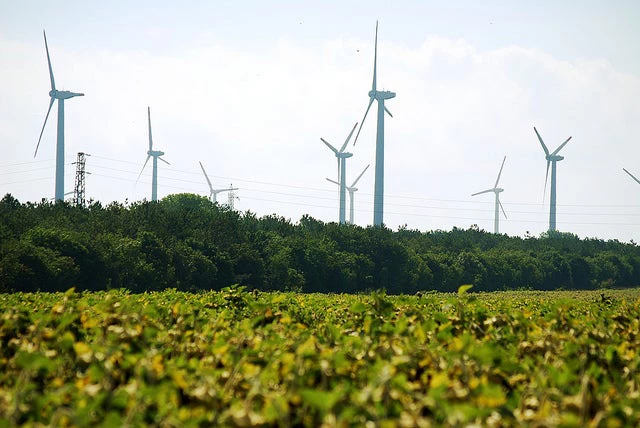
Today, over 80 million tons of CO2 will be emitted from economies around the world. Tomorrow will be the same, as will the day after that. The emitted amounts of CO2 will likely stay in the atmosphere for hundreds, if not thousands of years, further compounding the challenges in reversing the current and expected effects of climate change.
This past December, in Paris, leaders of 195 nations of the world agreed that this trend must be reversed, signaling a historic turning point in the global fight against climate change. The Paris Agreement ratified a global consensus to limit the global average temperature rise to ‘well below 2°C above pre-industrial levels and to pursue efforts to limit the temperature increase to 1.5°C above pre-industrial levels.’ Developing nations were at the forefront of this agreement, with almost every one of them setting carbon reduction goals. While the public sector will play a major role in helping achieve the ambitious targets, the sheer volume of investment required to support low-carbon energy, transportation, and agriculture projects throughout the developing world leaves a gap of hundreds of billions of dollars that only the private sector is in a position to fill.
Unfortunately, in many developing countries, private sector financing for these projects still entails significant barriers and uncertain returns. Barriers ranging from lack of market knowledge and capacity of project developers to macro-economic challenges and business environment risk, have kept investors from entering the market to undertake low-carbon investments.
An effective tool for overcoming these barriers is a financial tool that we at the International Finance Corporation (IFC), a member of the World Bank Group, refer to as “blended finance”. This approach allows us to blend small amounts of public concessional funds with private sector commercial funds to finance first-of-a-kind projects that have a high development impact and a strong potential to create a demonstration effect, but have not yet established a commercial track record. Blended finance can help rebalance the risk-reward profile of pioneering projects for private sector investors, thus drawing in private sector financing into these projects, while also leveraging the use of scarce public funds.
But blended finance can sometimes be a double-edged sword in the context of private sector projects. When executed effectively, it fills the gap between public and fully commercial financing, attracting commercial banks and private investors alike to crowd-in new sources of climate finance and help develop markets. When done poorly, it can lead to market distortion, inappropriate risk allocation, and windfall profits.
IFC has been blending concessional donor funds with its own resources to support climate-smart projects in developing countries for over a decade. This experience has taught us some important lessons learned and helped identify key factors contributing to our successful use of this innovative approach. Here are the top three:
Be well aware of your donor’s objectives and risk appetite: The successful deployment of blended finance requires a well-crafted risk-to-return allocation so that both the financial and development objectives of the funders are ultimately met, ensuring that contributors see the biggest impact for their invested resources.
Never underestimate the importance of alignment of interest: Through the use of a dedicated team that manages donor funds for climate mitigation and adaptation projects, IFC has built a track record as a disciplined investor of concessional donor funds. Donor partners’ resources have been used to invest in innovative, high-impact, and transformational climate-smart projects and while invested on concessional terms, they still have the potential to recoup principal and even yield some returns on investment for contributors.
Strong governance makes all the difference: IFC maintains rigorous and well-established policies and procedures that govern its blending operations. They ensure that blended investments receive the same scrutiny as IFC’s own investment dollars, including the application of integrity, due diligence, and environmental and social safeguards. The governance framework also requires a separate and independent investment committee to approve the use, structure, and terms of the donor-funded concessional finance used as part of IFC’s overall client financial package.
Results from IFC’s blended climate finance investments to date are encouraging. Since 2010, we have supported 43 investment projects in 23 countries, accounting for over $300 million in donor-funded investments from bilateral (IFC-Canada Climate Change Program) and multilateral sources (Climate Investment Funds, Global Environment Facility) that have been blended with $1.2 billion in IFC’s own account financing and $3.8 billion in private sector financing. Many of these investments have been successful in catalyzing market growth. Some of the noteworthy examples include the $4 million in concessional finance that helped bring some of Thailand’s first solar PV farms online in 2011. And in Mexico, $15 million in concessional financing helped one of the first privately financed wind farms in the country reach the finish line, demonstrating market feasibility to investors.
While much of IFC’s experience to date has been in climate mitigation projects, we are seeing new opportunities for integrating blended finance into private sector climate adaptation projects. Improving the resilience of a country’s infrastructure (power plants, roads, and ports) and aiding farmers, agribusiness, and other natural resource-sensitive businesses to cope with climate-related risks presents major opportunities for IFC to support clients as they adapt to a changing global climate.
The successful and targeted application of blended finance is not easy, and requires a commitment to a disciplined use of concessional funds. However, considering that a transition to a low-carbon economy and meeting the ambitious targets of COP21 requires billions in private sector finance, combined with daunting financing gaps still prevalent in much of the developing world, blended climate finance can serve as an effective catalyst in motivating the global economy to meet our collective ambition.


Join the Conversation